You’ve likely encountered both projects and products in your professional life, but have you ever stopped to reflect on how fundamentally different they are? While they may seem similar on the surface, these two approaches to business management diverge in vital ways that impact everything from team dynamics to long-term success. Understanding these distinctions can revolutionize how you approach your work, whether you’re leading a project or developing a product. As you explore the 10 key differences between projects and products, you’ll uncover insights that could transform your strategic thinking and boost your effectiveness in either domain.
Definition and Purpose
While both projects and products are integral to business operations, they serve distinct purposes and operate on different timelines. A project is a temporary endeavor with a defined beginning and end, aimed at creating a unique output or achieving a specific goal. In contrast, a product is an ongoing offering designed to fulfill customer needs and generate continuous value. Effective digital transformation consulting can help organizations navigate the complexities of aligning projects with product strategies.
Project management focuses on tasks, schedules, and resources to deliver a specific outcome within a set timeframe. For example, developing a new software application would be considered a project.
On the other hand, product management emphasizes understanding user needs, market fit, and strategic growth over time. The software application itself, once launched, becomes the product that requires ongoing development and improvement.
The key distinction lies in their duration and objectives. Projects are finite, concluding upon achieving their goals, while products are infinite in nature, requiring sustained management to remain relevant and successful.
This fundamental difference shapes how organizations approach project and product development, influencing resource allocation, team structures, and long-term strategies to meet evolving market demands and customer expectations.
Timeframe and Duration
Longevity separates projects from products in the business landscape. When you’re dealing with projects, you’re working within a defined timeframe, typically spanning weeks or months. Projects are temporary endeavors with clear start and end dates, designed to achieve specific goals within a set duration.
Business intelligence reporting can be particularly beneficial in managing project timelines and ensuring that deliverables are met on schedule. On the other hand, products exist in a continuum, evolving over years or even decades.
The product life cycle is an ongoing process that adapts to market changes and customer needs. Unlike projects, which conclude upon completion, products undergo multiple phases, including introduction, growth, maturity, and decline. This extended timeframe allows for iterative improvements and long-term value generation.
While projects require detailed planning to meet immediate objectives, products focus on sustainability and continuous development.
As you navigate the business world, it’s essential to understand these distinctions. Projects demand a sense of urgency to deliver results within their limited lifespan. Products, however, require a more patient approach, emphasizing gradual enhancements and adaptability.
Recognizing these differences in timeframe and duration will help you effectively manage both projects and products, ensuring ideal outcomes in your business ventures.
Team Structure and Dynamics
When it comes to team structure and dynamics, projects and products diverge considerably. In project management, you’ll typically find a more hierarchical structure with a project manager at the helm. This team of people is assembled for a specific task, often with distinct roles focused on executing a defined plan within a set timeframe. The project manager oversees tasks, timelines, and deliverables, guaranteeing everyone works towards completing project goals.
On the other hand, product teams are cross-functional, involving members from various departments like marketing, engineering, and design. This structure guarantees a holistic approach to meeting user needs and driving product success.
Unlike project teams, product teams foster continuous collaboration and iterative processes. You’ll find that product managers encourage an environment where team members regularly share feedback and adapt strategies based on user insights and market changes.
The long-term nature of product development leads to more stable team relationships, as members focus on the product lifecycle and ongoing improvements.
In contrast, project teams may experience higher turnover due to the temporary nature of their work, which can impact team dynamics and cohesion.
Scope and Objectives
The scope and objectives of projects and products represent another fundamental area of distinction. When you’re working on a project, you’ll find that it has a clearly defined scope with specific objectives aimed at achieving a unique outcome within a set timeframe. For instance, in software development, a project approach might involve creating a new application with predetermined features by a specific deadline.
Projects often utilize advanced data analysis tools to guarantee that objectives are met efficiently, delivering insights that can help in fine-tuning the project goals, thereby providing a competitive edge in the market through data-driven decisions.
In contrast, a product approach focuses on meeting ongoing customer needs and delivering continuous value throughout its life cycle. You’ll notice that products have a broader scope, evolving iteratively based on user feedback and changing market demands. This is particularly evident in software development, where applications receive regular updates and enhancements.
The objectives of a project are typically time-bound, aiming for completion by a certain deadline. On the other hand, product objectives center around user satisfaction, market fit, and revenue generation over an indefinite period.
You’ll measure project success by its ability to meet goals within budget and schedule constraints, while product success is evaluated by metrics such as customer retention, market share, and overall profitability.
Resource Allocation
Resource allocation stands out as a key differentiator between projects and products. In software projects, you’ll find that project managers typically allocate resources at the outset, working with a fixed budget and specific timeframe. They’ll carefully monitor these resources throughout the project’s lifecycle, ensuring tasks are completed on schedule and within budget constraints. This structured approach aligns with the need for custom solutions to meet defined objectives.
On the other hand, product management takes a more flexible approach to resource allocation, adapting as the product evolves and market demands shift.
You’ll notice that project teams often consist of temporary members brought together for a specific goal, while product teams are usually cross-functional and long-term. In projects, human resources are allocated based on task-specific needs, focusing on deliverable completion.
Product teams, however, are assembled with expertise in mind, addressing ongoing customer needs and driving innovation. As you manage resources in a project, you’ll find it critical to meet deadlines and budget constraints.
In contrast, product management emphasizes efficient resource use to respond to market changes and enhance product value over time. This fundamental difference in resource allocation reflects the distinct nature of projects and products in the business world.
Risk Management Approaches
Distinguishing between projects and products, you’ll find that risk management approaches differ markedly. Projects typically employ defined strategies to assess known risks and implement mitigation plans throughout their lifecycle. These risks often decrease as the project progresses towards completion.
In contrast, product risk management is more adaptive and ongoing, with teams continuously evaluating external factors and user feedback. While projects have a fixed scope and timeline, with risks often predetermined and addressed in the planning phase, products accept uncertainty. This allows teams to pivot based on evolving market demands.
You’ll notice that project risks are usually higher initially due to execution complexities, whereas product risks tend to be lower post-launch as they undergo iterative testing and improvements. Effective risk management in products requires a focus on long-term sustainability and adaptability.
Project management, however, emphasizes meeting specific deadlines and deliverables within a constrained environment. Understanding these differences is essential for successfully managing risks in both projects and products, ensuring you can adapt your approach accordingly.
Success Metrics
When evaluating the success of projects and products, you’ll find distinct differences in the metrics used. Projects typically focus on short-term goals, measuring success through meeting deadlines, staying within budget, and achieving specific deliverables outlined in the project plan.
Key performance indicators (KPIs) like completion percentage and adherence to timelines are essential for project managers to track progress.
In contrast, product managers use ongoing performance indicators to gauge success. These include customer satisfaction, market share growth, and product usage rates over time.
Products often rely on metrics like Net Promoter Score (NPS) and Customer Lifetime Value (CLV) to assess long-term performance. While projects are evaluated at completion, product success is continuously assessed throughout its life cycle, incorporating customer feedback for iterative improvements.
Financial metrics play a significant role in both projects and products. However, products emphasize long-term revenue generation, whereas projects focus on short-term financial outcomes.
Return on investment (ROI) and profitability are critical for both, but product success metrics often extend beyond immediate financial results to include factors like market penetration and customer retention.
Stakeholder Engagement
Stakeholder engagement differs markedly between projects and products, with each approach tailored to its unique lifecycle and objectives.
In project management, you’ll find that stakeholder roles and responsibilities are clearly defined, with teams assembled for specific tasks within a limited timeframe. Projects typically prioritize stakeholder input during planning and execution phases, focusing on meeting specific deliverables. This approach has proven effective, with studies showing that projects with engaged stakeholders have a 20% higher success rate.
In contrast, product management requires ongoing stakeholder engagement throughout the product lifecycle. You’ll need to emphasize continuous feedback to adapt to user needs and market changes. This iterative approach is essential for developing a product roadmap that aligns with market demands and user expectations.
By consistently incorporating stakeholder insights, you’re fostering long-term product success. Effective stakeholder engagement in product management involves users, customers, and team members, ensuring that the product evolves in response to real-world feedback.
While projects have a defined endpoint, products require sustained stakeholder involvement to remain competitive and relevant in dynamic markets.
Adaptation to Change
Flexibility marks a significant distinction between project and product approaches when it comes to adaptation to change. Projects typically follow rigid plans and timelines, limiting their ability to respond to shifting conditions. In contrast, products thrive on continuous feedback and iterative development, allowing for more agile responses to market changes.
When you’re managing a project, change requests often go through formal approval processes, which can slow down adaptation. Product management, however, welcomes change as an integral part of the development cycle. This approach allows you to enhance user satisfaction and improve market fit more readily.
You’ll find that organizations adopting a product mindset are better equipped to pivot in response to customer needs or technological advancements. They prioritize adaptability over strict adherence to initial plans. This flexibility is essential in the current fast-paced business landscape.
To effectively adapt to change in product development, you’ll need cross-functional collaboration. This enables your teams to quickly assess and implement necessary adjustments.
Project teams, on the other hand, may face silos that hinder their responsiveness, making it harder to incorporate changes once execution begins.
Long-Term Value Generation
Over time, the distinction between projects and products becomes increasingly apparent in their approach to long-term value generation. Products are designed with a focus on continuous innovation and evolution, adapting to changing customer needs throughout their life cycle. This fundamental difference between project and product approaches is evident in how organizations allocate resources and plan for the future.
While projects have defined outputs and completion dates, products require ongoing investment in marketing, updates, and customer support to maintain their value. The product life cycle, including stages like introduction, growth, maturity, and decline, emphasizes the importance of long-term strategies for sustained market relevance. This approach to digital product development fosters customer loyalty and satisfaction through iterative improvements based on user feedback.
Organizations that prioritize a product mindset tend to achieve better long-term financial performance by consistently delivering value to customers. By focusing on long-term value generation, product managers can guarantee their offerings remain competitive and relevant in the market.
This strategy contrasts sharply with project-oriented approaches, which often prioritize meeting specific deadlines and outputs rather than ongoing customer satisfaction and market adaptation.























